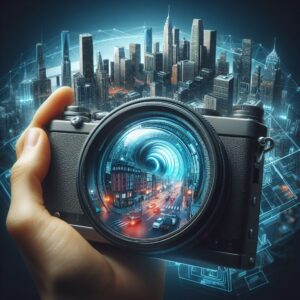Introduction: Capturing the Future
The realm of photography has undergone a remarkable transformation in recent years, with smart cameras and cutting-edge technology reshaping the way we capture and immortalize moments. From AI-driven enhancements to compact yet powerful devices, the photography landscape is evolving rapidly. In this article, we explore the innovations in smart cameras and photography technology that are propelling this visual art into the future.
AI-Powered Smart Cameras:
Artificial Intelligence (AI) is at the forefront of revolutionizing photography. Smart cameras, such as those found in the latest smartphones and dedicated devices like the Google Pixel and Huawei P series, leverage AI to enhance image quality. From intelligent scene recognition to automated adjustments for optimal exposure, AI algorithms contribute to sharper, more vibrant, and well-balanced photos.
Computational Photography:
Computational photography is a game-changer, using software algorithms to process images and achieve effects that were once only possible with high-end DSLR cameras. Technologies like HDR (High Dynamic Range), Night Mode, and Super Resolution enhance image quality and allow photographers to capture stunning details in various lighting conditions. Google’s Night Sight and Apple’s Deep Fusion are notable examples of computational photography advancements.
Augmented Reality (AR) Features:
Smart cameras are incorporating augmented reality features to add creative and interactive elements to photography. AR overlays, stickers, and filters enhance the storytelling aspect of images, allowing users to personalize their photos with virtual elements. Social media platforms and camera apps often integrate AR features to provide users with a playful and immersive photography experience.
Compact and Powerful Mirrorless Cameras:
The rise of mirrorless cameras signifies a shift towards compact yet powerful photography gear. Brands like Sony, Canon, and Nikon are leading the way with mirrorless camera systems that offer professional-grade image quality in a smaller form factor. These cameras leverage electronic viewfinders and advanced autofocus systems, providing photographers with versatility and portability without compromising on performance.
360-Degree and VR Photography:
The immersive experience of 360-degree and virtual reality (VR) photography is becoming increasingly accessible. Devices like the Insta360 and Ricoh Theta enable users to capture panoramic images and videos. VR photography allows users to step into a captured moment, enhancing storytelling capabilities and pushing the boundaries of traditional photography.
Drone Photography:
Drones equipped with high-quality cameras have opened up new perspectives for photographers. Aerial photography provides breathtaking views and unique angles that were once reserved for professional filmmakers. Drones from DJI, Parrot, and Autel Robotics feature advanced stabilization systems and intelligent flight modes.
Proximity Sensors and Gesture Controls:
Innovations in smart cameras include proximity sensors and gesture controls, allowing users to interact with their devices in more intuitive ways. Some cameras, such as those in smartphones, use proximity sensors to detect when a user is framing a shot, while gesture controls enable hands-free operation for tasks like capturing a selfie or starting a video recording.
Conclusion: Capturing the Future
Smart cameras and photography technology innovations are propelling the art of capturing moments into a future filled with endless possibilities. From the integration of AI and computational photography to the rise of compact yet powerful devices, photographers now have tools that offer unprecedented creative freedom and flexibility. As technology continues to advance, the world of photography is set to evolve even further, providing enthusiasts.
For more Article like this, visit our Website Here

